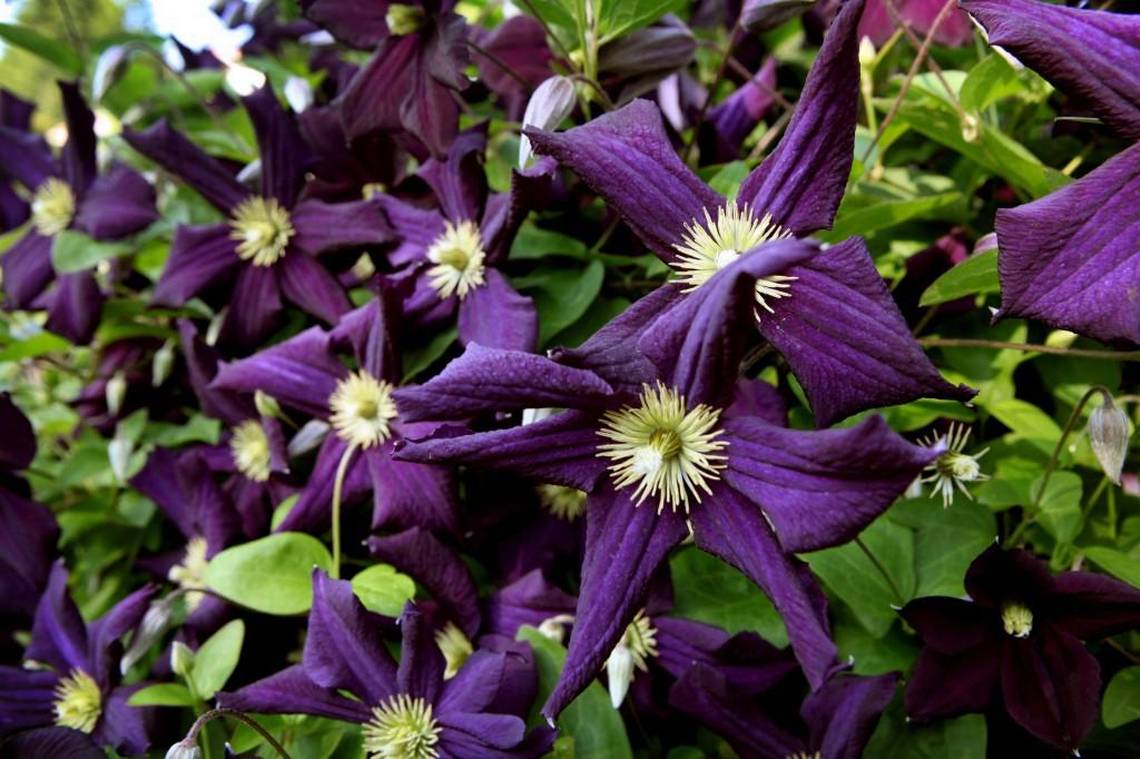
The second half of April is when gambling gardeners start to fill containers with blooming plants that are a bit cold tolerant. This means lobelia, petunias, geraniums and alyssum can go into the garden and unless we suffer an usually chilly night, they will survive.
But do not try to jump the gun or get a head start on the season with cold sensitive plants such as coleus, impatiens, marigolds, sweet potato vine or begonias. They may not suffer an instant death, but they will instead shiver away in a cold depressed state and take months to recover from the shock.
This is a good week to fertilize the lawn if you have not yet done so and apply fertilizer around your hungry roses, perennials and flowering vines.
You can cut back spring-flowering clematis such as Clematis armandi once it is done blooming, but do not prune and do not fertilizer clematis that is in flower or just budding out. Feeding a clematis in bloom will cause the flowers to open and then fade quickly. Better to enjoy the flowers on clematis as they slowly open, then feed once the blooms have passed. Your reward is often a second flush of blooms.
Q. Why are my newly planted marigolds turning black on the edges of the leaves? Also, my coleus are melting or rotting at the stem where it meets the soil. This is so disappointing! — Y.G. Olympia
A. Marigolds show cold distress with black tipped leaves, and coleus cannot handle cool nights so will melt or rot right at soil level. Even if you cover these heat-loving annuals at night, they will still suffer if the soil is cold and damp. You can uproot them from the cold soil and move them indoors, try covering them at night, or just add them to the compost pile and try again in mid May when night temperatures will be over 45 degrees.
Q. I have a clematis vine that was growing great this spring and then just overnight it wilted and now looks dead. I did not fertilize or spray it. I do not see any insect damage. What happened? — Sign me Clematis killer.
A. The tragedy of clematis wilt disease spreads its ugly dread. Clematis wilt is a fungal infection that quickly invades the vascular system of the clematis. The large flowering hybrid clematis such as “Nelly Moser” and “Henryi” are most likely to suffer such so sticking with the smaller blooms of the Clematis montana and Clematis viticella is one way to avoid the wilt.
The good news is that clematis can be like Lazarus and return from the dead. Clip off all infected vines and do not uproot the clematis. You may witness a rebirth of new vines in a few months or even a few years. It is thought that a deep mulch to protect the roots and a barrier to keep animals and kids from damaging the thin clematis stems is the best way to prevent a stem injury that will provide entry for the fungus.
I have had good luck growing clematis in large containers using potting soil mixed with compost to ensure a soil that drains well but holds onto moisture.
Q. I forgot to prune my roses. Now they are covered with new growth, and I see some buds. Must I prune my roses back every year? These are rather old roses and I do not know what kind. — P, Email
A. No, you do not have to prune your roses. I can promise you a rose garden has never read the list of pruning rules, so if your roses are budded and full of new growth, enjoy the blooms this summer. After the first flush of blooms, you can follow the stems back to a joint to shorten the plants if you prefer, but letting a rose plant reach for the sky as it flowers is not going to cause any real damage.
You should remove any dead, diseased or damaged rose growth any time of year, and aim to give your roses a proper pruning in early spring to promote healthy growth. A good reminder to yourself is to prune when you see the bright yellow blooms of forsythia in flower.
Attend a seminar with Marianne
At 11 a.m. Saturday, April 27, Marianne Binetti will conduct a free gardening seminar at Walrath’s Nursery in Gig Harbor, 4521 56th St NW. Call 253-858-8184 or go to www.tewalraths.com for more information.
Marianne Binetti has a degree in horticulture from Washington State University and is the author of several books. Reach her at binettigarden.com.